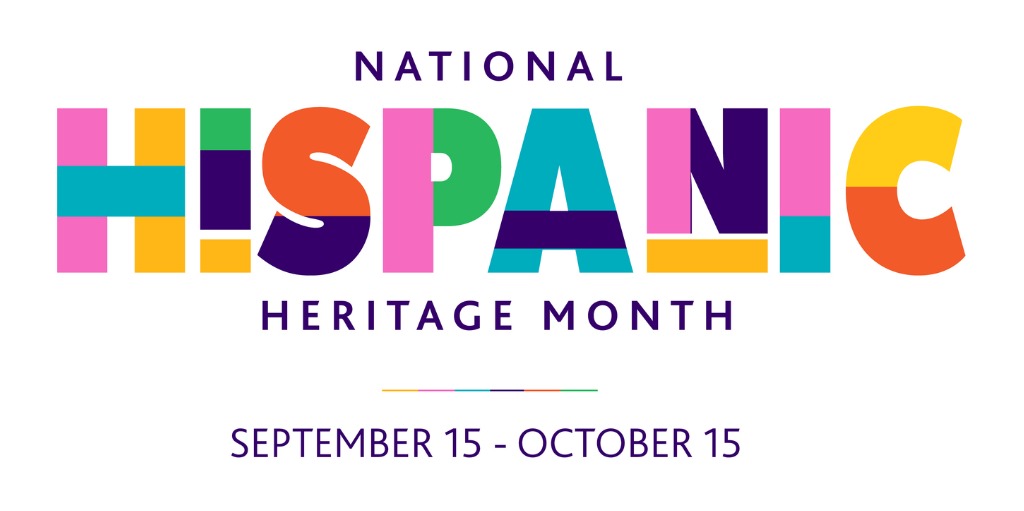| By Carol Brennan |
National Hispanic Heritage Month starts on September 15, a date tied to the 1810 event known as El Grito de Dolores (The Cry of Dolores), the storied ringing of church bells that began the Mexican War of Independence on September 16, 1810. This September 15, viewers around the world can watch the livestream of this annual event commemorating that milestone. Mexico’s outgoing president, Andrés Manuel López Obrador (born 1953), will ring the ceremonial El Grito de Dolores from the balcony of the official residence of the Mexican president in Mexico City, the Palacio Nacional. On October 1, 2024, Obrador will relinquish the presidency to Claudia Sheinbaum Pardo (born 1962), the first woman elected to that office in the 203-year history of Mexico. The former mayor of the capital city, Sheinbaum began her career as an energy research engineer in the 1990s after completing work toward her Ph.D. at California’s Lawrence Berkeley National Laboratory. Reflective of the longstanding links between the US and Mexico are Sheinbaum’s regular visits to the US to spend time with her daughter—a PhD student at the University of California at Santa Barbara—and her sister, who is the daughter-in-law of the late Colombian novelist Gabriel García Márquez (1927–2014).
National Hispanic Heritage Month began as National Hispanic Heritage Week in 1968, the same year that former schoolteacher Gloria Rojas (1939–2022) became the first female Hispanic reporter at a major network affiliate in New York City. Another New Yorker from a Puerto Rican household was LGBTQ+ activist Sylvia Rivera (1951–2002), a transgender woman who was forced to begin living independently at age 10 and was an early figure in the post-Stonewall gay liberation era of 1970s New York City.
The 1980s featured several milestones for Hispanic Americans, including the rise of Roberto Goizueta (1931–1997), who in 1981 became the first Hispanic chief executive officer of a Fortune 500 company when he took over at soft drink giant Coca-Cola. Seven years later, Lauro F. Cavazos Jr (1927–2022) became the first Hispanic to be appointed to a cabinet post when US President Ronald Reagan (1911–2004) named Cavazos—the son of a Texas rancher-turned-college president—as Secretary of Education. Holding that same cabinet post in the Biden White House is Miguel Cardona (born 1975), the Connecticut-born son of Puerto Rican parents who spoke only Spanish when he began kindergarten in 1980. The same year that Cavazos took office also marked the passing of nuclear physicist and Nobel Prize laureate Luis W. Alvarez (1911–1988), a University of Chicago–trained scientist who was part of the top-secret team that developed the world’s first atomic weapon in 1945.
Gale In Context: Biography features biographical essays on all of these trailblazers, plus hundreds more Hispanic Americans with impressive achievements that are less widely known. The talented singer, songwriter, and actress Irene Cara (1959–2022) is one example. Best remembered for her star turn in the hit 1980 movie musical Fame, the Black/Puerto Rican/Cuban New Yorker is also the first woman of color to win the Academy Award for Best Song, bestowed in 1984 for writing “Flashdance…What a Feeling.” The playwright Matthew López (born 1977), the son of a Puerto Rican father, became the first Latino writer to win the Tony Award for Best Play in 2021, one of several honors received for The Inheritance; he is the nephew of Priscilla López (born 1948), who originated the role of Diana in A Chorus Line and was nominated for a 1976 Tony Award for delivering its heartrending showstopper “What I Did for Love.” You can read more about these people and others in Gale In Context: Biography.

About the Author
Carol Brennan has been writing biographical entries for Cengage/Gale since 1993. If she’s not writing, she is either at yoga or walking her dachshund. Carol consumes an alarming volume of podcasts and audiobooks weekly.




